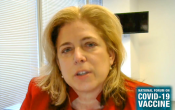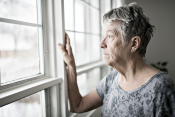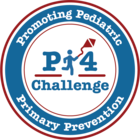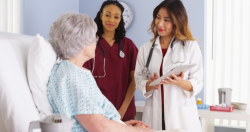
Today, the Health Resources and Services Administration (HRSA) announced the award of nearly $99 million through the Ryan White HIV/AIDS Program to expand access to HIV care, treatment, medication and essential support services. This investment is a critical component of the U.S. Department of Health and Human Services' Ending the HIV Epidemic (EHE) initiative. EHE aims to reduce the number of new HIV infections in the United States by at least 90 percent by 2030 with the goal of decreasing the number of new HIV infections to fewer than 3,000 per year.
"For three decades, HRSA's Ryan White HIV/AIDS Program has been a leader in the federal effort to end the HIV epidemic in the U.S.," said HRSA Acting Administrator Diana Espinosa. "Today's investment builds on the more than $2 billion in grants awarded through the Ryan White HIV/AIDS Program in fiscal year 2020, which helps to continue the program's incredible track record of viral suppression that saves lives, reduces health disparities and slows the spread of the virus."
Read the release.
|

As part of his National Strategy to defeat COVID-19, President Biden announced a new effort to make masks more easily available to communities hard hit by the pandemic. The Administration will deliver more than 25 million masks to over 1,300 Community Health Centers across the country, as well as 60,000 food pantries and soup kitchens, reaching some of the nation’s most vulnerable populations.
The Centers for Disease Control and Prevention (CDC) recommends mask wearing as a critical step to help slow the spread and protect people from getting COVID-19, but many low-income Americans still lack access to this basic protection.
Read the fact sheet.
|

Decades of mistrust of the medical establishment in minority communities – compounded by widespread misinformation about vaccine safety – have left nearly one in five Americans reluctant to seek the COVID-19 shot that could save their lives, experts said last week.
Speaking before an online audience of some 11,000 attendees nationwide, public and private sector authorities urged a concerted effort to educate the public and win back the trust of underserved populations to slow the spread of the Coronavirus.
Announced Jan. 20, the Administration's proposed American Rescue Plan would entail a massive public health campaign by multiple federal agencies – including HRSA, front and center – in a race against time, as the virus morphs into new and potentially more dangerous strains.
Read more about the COVID-19 Vaccine Forum.
|

HRSA continues to make COVID-19 claims reimbursement to health care entities for the testing and treatment of uninsured individuals. The program is also reimbursing providers for administering COVID-19 vaccines to uninsured individuals. Starting last week, HRSA began adding claims information related to COVID-19 vaccine administration. As of March 3, 2021, HRSA has reimbursed over $2 billion in testing claims, $2 billion in treatment claims and newly added is approximately $750 thousand in vaccine administration claims for the uninsured.
A listing of health care entities that have agreed to the program's Terms and Conditions and received claims reimbursement is now available from CDC.
|

Using data from 245 health centers that completed the voluntary weekly Health Center COVID-19 Survey, a new CDC article reviews trends in telehealth use, including by U.S. Census region and urban/rural classification, during a 20-week period. Study results underscore the need to sustain expanded telehealth use among health centers and to continue to address barriers to telehealth adoption, particularly in the south and rural areas.
For more information about survey results—including links to dashboards—visit our Health Center COVID-19 Survey page.
|

HRSA is updating all automatically designated Health Professional Shortage Areas (Auto-HPSA) scores as part of the Shortage Designation Modernization Project also called the 2021 National Shortage Designation 2.0, tentatively planned for summer of 2021.
Register now for a training session on March 9 from 2-3 p.m. EST to access your facility-specific Update Preview within the Auto-HPSA portal.
|

HRSA has published a new report on the education and training of the U.S. nursing workforce based on data from the 2018 National Sample Survey of Registered Nurses (NSSRN). Did you know that the proportion of nurses who graduated with a bachelor’s degree rose to 54.5 percent in the years between 2012 and 2016, compared to only 22.9 percent before 1971? Check out other highlights from the report (PDF - 524 KB).
|

New research from the HRSA-funded RUPRI Center for Rural Health Policy Analysis shows that a higher percentage of nursing homes closed in nonmetropolitan counties in the U.S.
The report shows that between 2008 and 2018, 1,255 nursing homes closed across the country. As of 2018, almost 8 percent of U.S. counties had no nursing home, with 10 percent of nonmetro counties and less than 4 percent of metro counties lacking nursing homes. Of the 243 counties with no nursing homes, 44 were newly created "nursing home deserts" (counties with no nursing home) because of nursing home closures between 2008 and 2018; about 91 percent of these new nursing home deserts were in nonmetropolitan counties.
Learn more.
|

The March 15 submission deadline for the Promoting Pediatric Primary Prevention (P4) Challenge is quickly approaching. HRSA’s P4 Challenge responds to declining rates of childhood vaccination coverage and well-child visits due to COVID-19 quarantines. CDC data shows that these declines might leave young children and communities vulnerable to vaccine-preventable diseases such as measles. To address these declines, HRSA developed the P4 Challenge, which invites applicants to propose and implement innovative approaches to increasing access to well-child visits and/or immunizations in primary care settings. HRSA will award a total of $1 million in prizes for winning proposals. In Phase 1 of the P4 Challenge, HRSA will select up to 50 winners to receive $10,000 and then deploy their proposed innovative in Phase 2.
For more information, please refer to the P4 Challenge Frequently Asked Questions page, as well as our informational webinar recording and related presentation slides (PDF - 282 KB). Please send submissions and any additional inquiries to MCHBP4Challenge@hrsa.gov.
|

Children living in rural communities may experience unique challenges that impact health outcomes. The Rural Health Information Hub (RHIhub), the University of Minnesota Rural Health Research Center, and the NORC Walsh Center for Rural Health Analysis created a toolkit to help rural organizations with implementing early childhood health promotion programs in their communities.
Check out the toolkit.
|

The COVID-19 pandemic is a global crisis that may have greater implications for people who use long-term services and supports (LTSS), as these populations are particularly susceptible to severe illness or death caused by COVID-19. As the primary payer of LTSS for millions of Americans, Medicaid is an important player in state COVID-19 responses for vulnerable populations.
Hosted by the National Conference of State Legislatures (NCSL), this webinar on Friday, March 5, 10-11 a.m. EST, will highlight state policy options to enhance access to LTSS and keep older adults and people with disabilities safe during the pandemic – including supporting the direct-care workforce, allowing flexibility for in-home and community-based services delivery and ensuring safety of nursing home residents.
Register for the webinar.
|

A new article by the National Governors Association discusses state strategies for recruiting and retaining a direct-care workforce in facility settings during and after the COVID-19 pandemic. It also outlines the Centers for Medicare & Medicaid Services (CMS) waivers issued to address staffing challenges across the continuum of care during the public health emergency, including a waiver to temporarily reduce certain training requirements.
The article was produced through HRSA’s cooperative agreement with National Organizations of State and Local Officials.
Read the article.
|

On March 10, HRSA’s HIV/AIDS Bureau (HAB) will observe National Women and Girls HIV/AIDS Awareness Day. This is a critical opportunity to shed light on the impact of HIV on women and girls and encourage discussions about HIV testing, sexual health, and the availability of HIV prevention or care and treatment services.
HIV disproportionately impacts Black women and transgender women in the United States, and they often face stigmas related to HIV status, gender, gender identity, and ethnicity. While the rate of HIV diagnoses in women has decreased in recent years, thousands of women are still diagnosed with HIV each year. HRSA HAB is committed to helping women diagnosed with HIV get the care, treatment, medication, and support services they need through the Ryan White HIV/AIDS Program (RWHAP). In 2019, more than 148,000 women received services through the RWHAP, and nearly 88% of women receiving RWHAP HIV medical care were virally suppressed.
Learn more about the Ryan White HIV/AIDS Program.
|
|
|
|